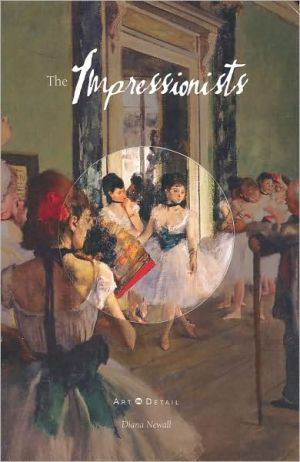Mondrian
The unmistakable work Piet Mondrian (1872-1944) is characterized by its rhythm, clarity and bold colours. Often considered wholly nonrepresentational, his paintings were directly inspired by his experience of life. By examining Mondrian's working process, through his drawings, studies and finished paintings, John Milner explores the tension between the brilliantly disciplined compositions and their underlying subject-matter.
Search in google:
The unmistakable work Piet Mondrian (1872-1944) is characterized by its rhythm, clarity and bold colours. Often considered wholly nonrepresentational, his paintings were directly inspired by his experience of life. By examining Mondrian's working process, through his drawings, studies and finished paintings, John Milner explores the tension between the brilliantly disciplined compositions and their underlying subject-matter.Publishers WeeklyPiet Mondrian, the painter of architectonic grids who seemed to reject nature, had early on steeped himself in the study of landscapes and flowers. His haunting pictures of farms, windmills and factories treat nature as a dynamic interplay of forces. Influenced by Helena Blavatsky's Theosophical movement, the fastidious Dutch artist of strict Calvinist upbringing turned to mystical introspection, producing symbolist images like Dying Sunflower (1908). After experimenting with pointillist color and spare seascapes, Mondrian, who believed he had been reincarnated many times, moved to Paris and discovered cubism, which helped him to depict the underlying rhythm and structure of what he saw. From there it seems but a hop to Broadway Boogie-Woogie (1943). Milner ( Vladimir Tatlin and the Russian Avant-Garde ) has produced a masterful account of Mondrian's artistic and spiritual growth, a marvelously illustrated monograph that gives us Mondrian whole--as mystic, philosopher and individualist. (Dec.)
introduction6Ch. 1Elements of landscape8Ch. 2Evolution42Ch. 3A cubist in Montparnasse88Ch. 4Holland: the art of balance118Ch. 5Paris: the mature style154Ch. 6In flight: London and New York200notes227bibliography232chronology234acknowledgments236index237
\ Publishers Weekly\ - Publisher's Weekly\ Piet Mondrian, the painter of architectonic grids who seemed to reject nature, had early on steeped himself in the study of landscapes and flowers. His haunting pictures of farms, windmills and factories treat nature as a dynamic interplay of forces. Influenced by Helena Blavatsky's Theosophical movement, the fastidious Dutch artist of strict Calvinist upbringing turned to mystical introspection, producing symbolist images like Dying Sunflower (1908). After experimenting with pointillist color and spare seascapes, Mondrian, who believed he had been reincarnated many times, moved to Paris and discovered cubism, which helped him to depict the underlying rhythm and structure of what he saw. From there it seems but a hop to Broadway Boogie-Woogie (1943). Milner ( Vladimir Tatlin and the Russian Avant-Garde ) has produced a masterful account of Mondrian's artistic and spiritual growth, a marvelously illustrated monograph that gives us Mondrian whole--as mystic, philosopher and individualist. (Dec.)\ \








